

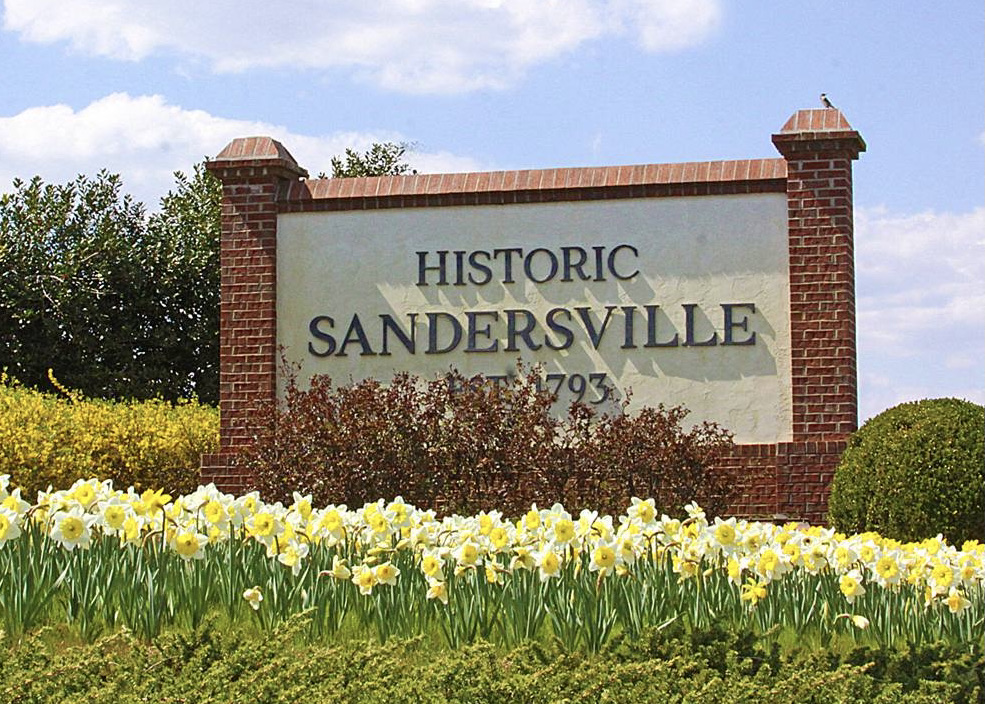
The Origin of Silk Stocking Street
Many years ago, the sidewalks of the then small town of Sandersville were not paved. In the town, located adjacent to the "Red Old Hills of Georgia," mud prevailed on the sidewalks after a rain, and walking required carefully choosing the less soggy spots. One day, Miss Sallie Reid Brantley, daughter of the beloved Dr. Solomon D. Brantley, and her visitor, Miss Lippincott, of Philadelphia were walking. As the prevailing fashion was long skirts that literally swept the ground, it was necessary to lift them to prevent contamination by the sticky, red mud. Perhaps lifting them unnecessarily high to preserve their fine dresses, they walked along North Harris Street oblivious of encounter. By chance, two gentlemen walked behind them, Mr. Bob Brown and a friend. Mr. Brown's humor overflowed at the sight of the ladies' unknown exposure of their expensive and unusual silk stockings, and he remarked,
"This must be Silk Stocking Street!"
With many repetitions of the witty remark, the sobriquet, "Silk Stocking Street" has persisted to this day.
This version of the name was told to Louise Irwin by Mrs. Alex Peterson of Ailey, Georgia,
the former Marie Brown of Sandersville, daughter of Mr. William Gainer "Bob" Brown.

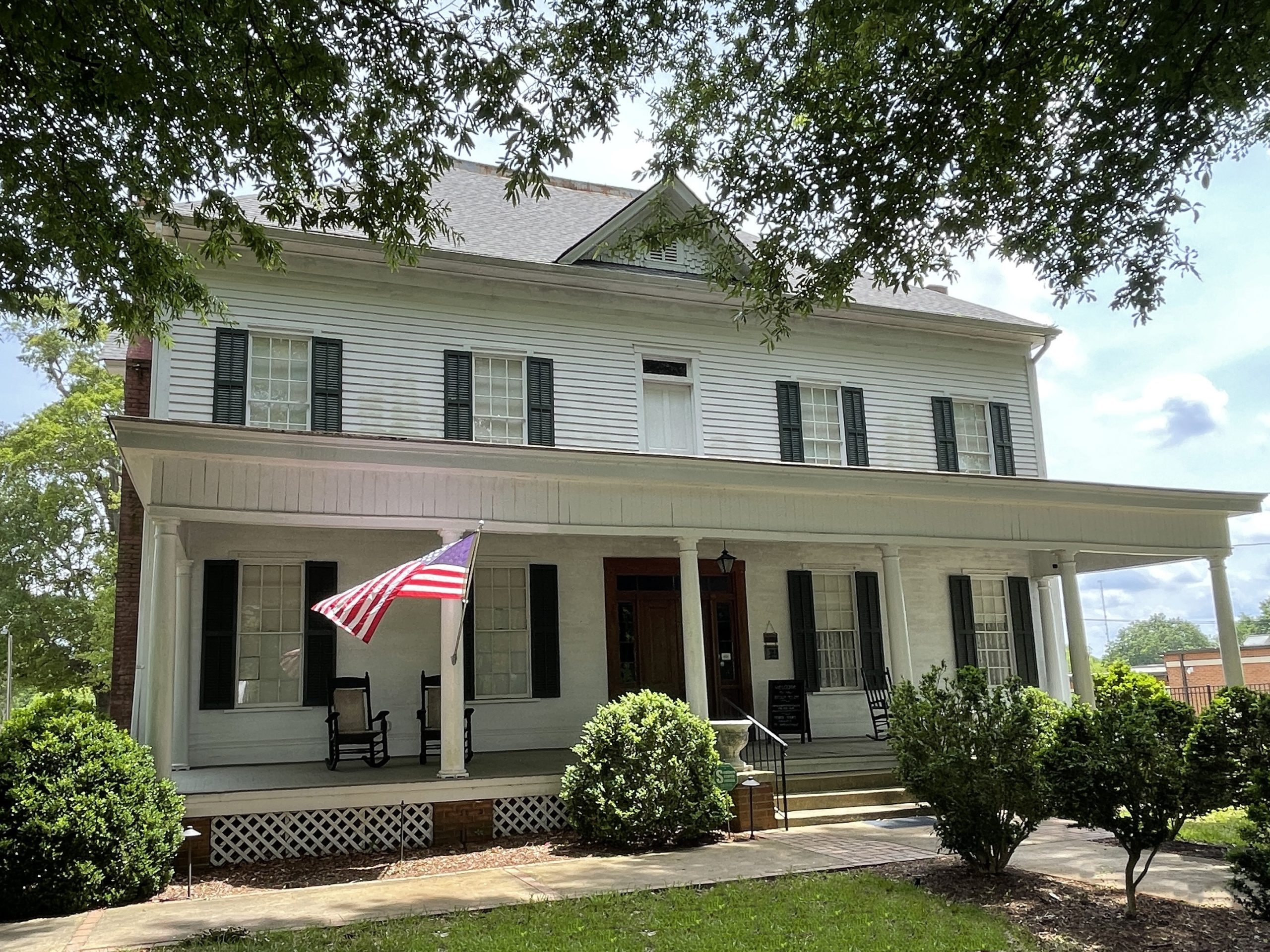
"Woodland Terrace”, as it was called in its more elegant days, was built by Nathan Haynes between 1850-1852. The original part of the house consisted of four rooms downstairs and four upstairs, with the front rooms beautifully proportioned around a long center hall. The stately home was later acquired by Captain William Gainer Brown, his wife Mariah Mitchell Brown, and their four children around 1860. The property would stay in the Brown family for three generations and over one hundred years. After the death of the last local descendant and resident, Mrs. Marie Brown Peterson, the house remained vacant and in a great state of disrepair for twelve years. In 1989, the Washington County Historical Society purchased the property and began a ten-year renovation process. Restored to her former glory, the home is now the Historical Society’s official headquarters and the Brown House Museum.

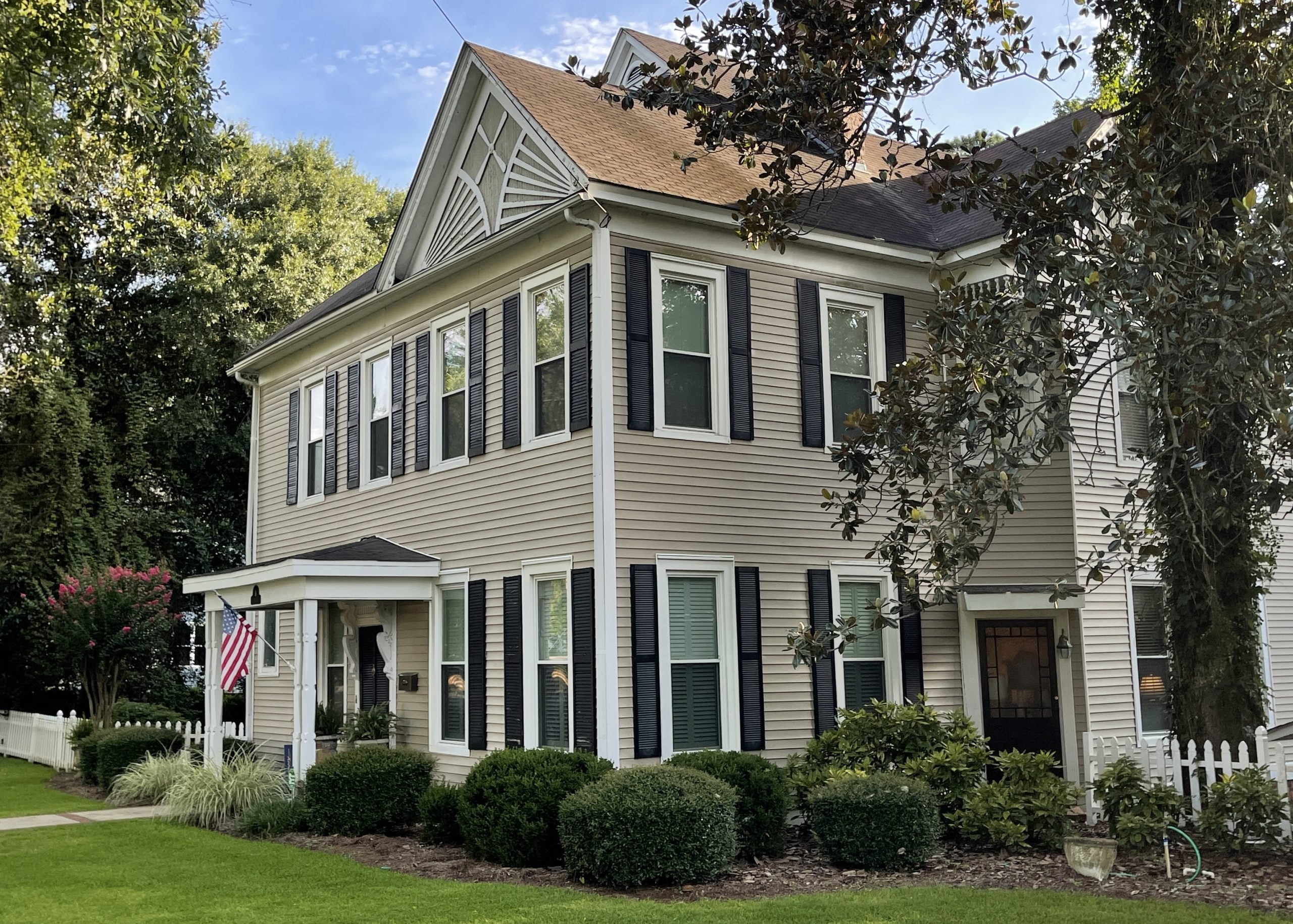
“Green Valley”
Around 1895, prominent citizen and local businessman, James D. Newman, built this lovely Victorian house for his wife Annie Newman. Because of the sloping land surrounding the home, Mrs. Newman named the place “Green Valley,” and kept the house painted green for many years. After the death, of Mrs. Newman, the property was acquired by Mrs. and Mrs. O.J. May in the early 1940s. The property has remained in the same family for three generations and is now occupied by the Mays' grandson, David Brooker, his wife Anne, and their three children.

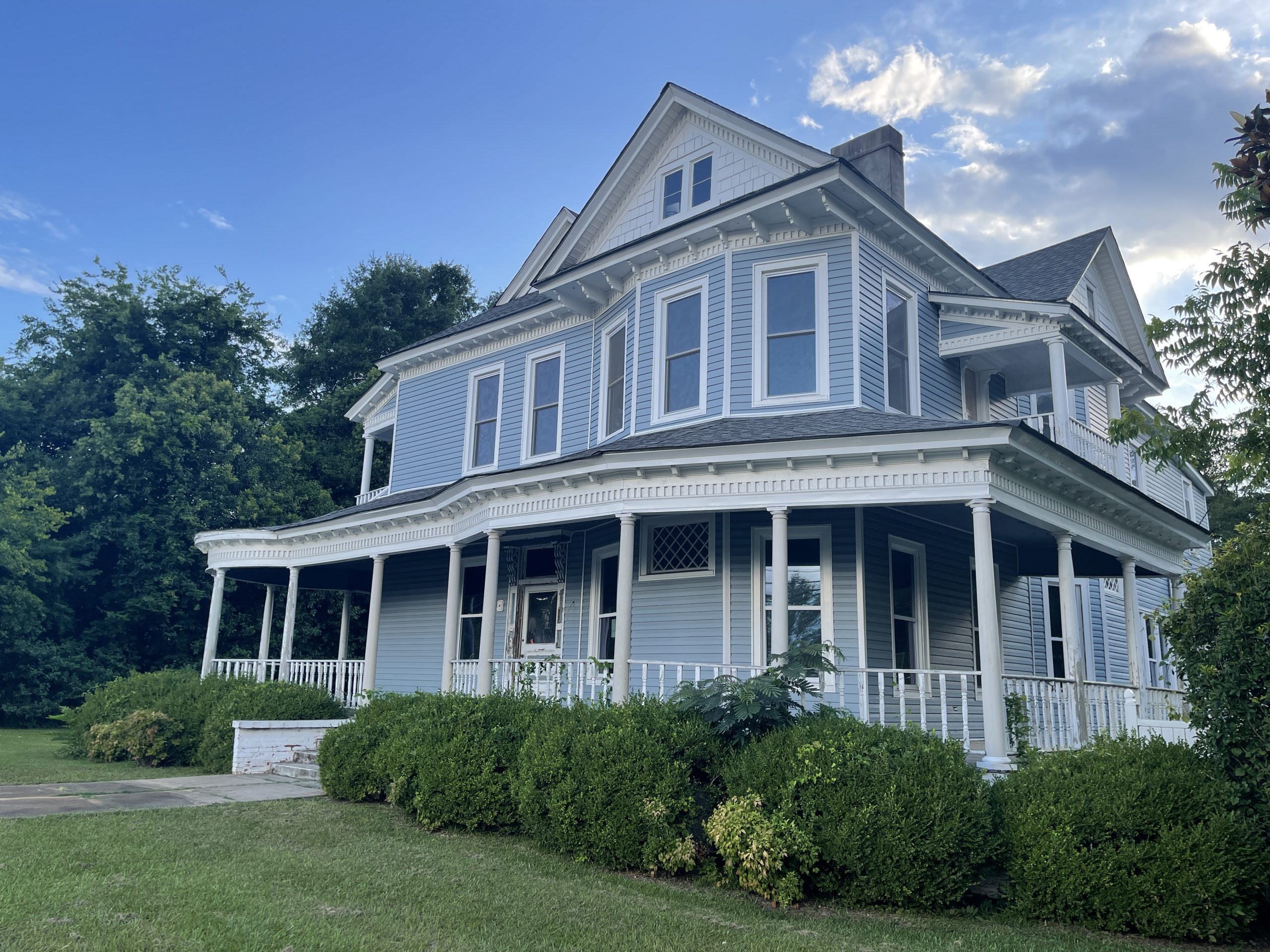
Around the same time older brother, James D. Newman was building his home, Mr. Isadore Newman built his stately Victorian home for his wife Tallulah to replace the house which previously burned in the same location. Lula, as Mrs. Newman, was affectionally called, lived her remaining years in the home after the death of her beloved Isadore. Having no children, the property was acquired by local businessman Mr. Clifford Bell and his wife Jackie. The Bells raised three children in this lovely home. The house was sold by the Bells in the 1990s and is under renovation by the current owners.

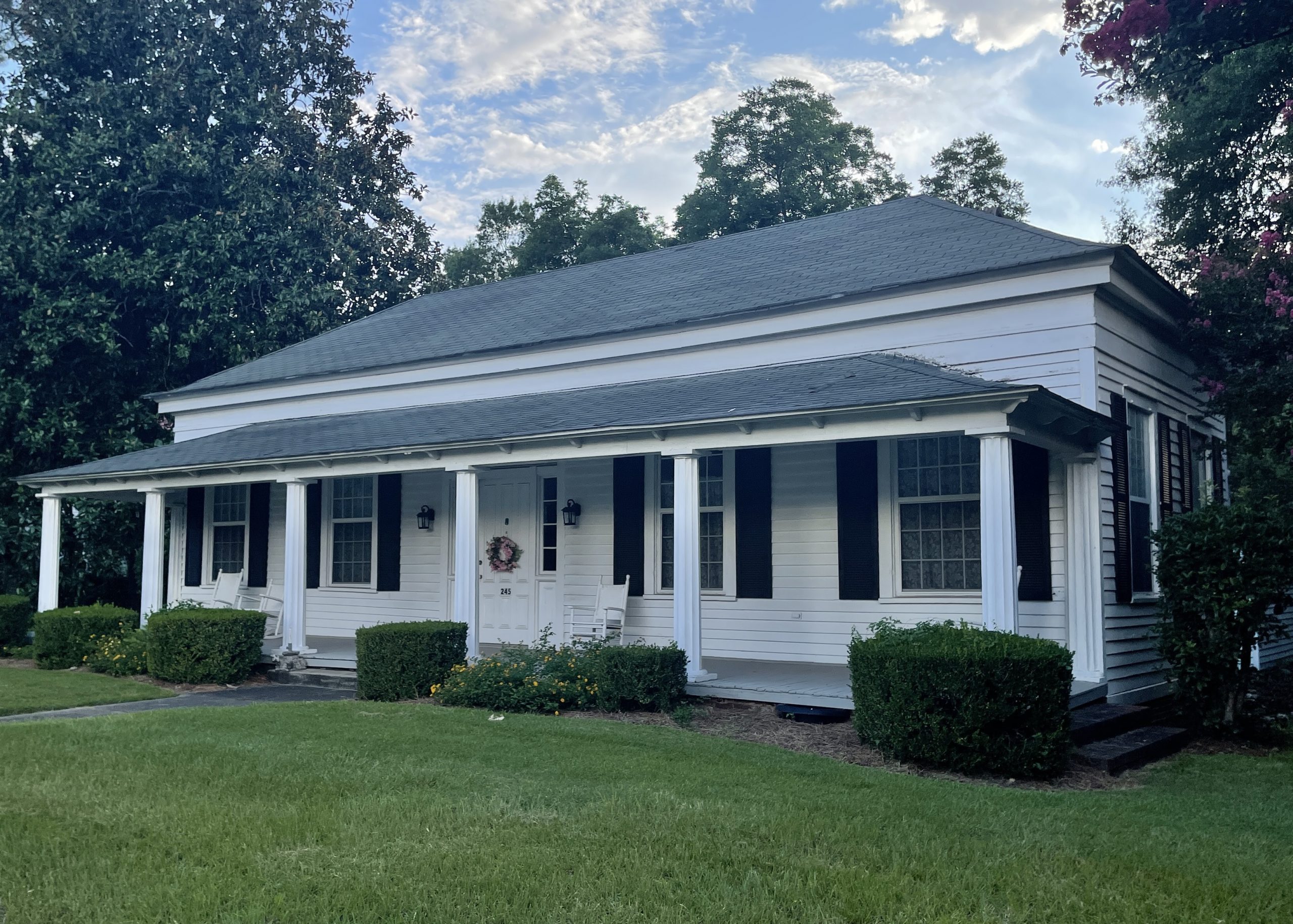
The original front portion of this house was built in the early 1850s by Major Mark Newman and his wife, Ann. Maj. Newman & Mrs. Newman were the parents of James and Isadore Newman, both of whom constructed homes on the adjacent North Harris Street lots. Maj. Newman, who later became County Ordinary, is recognized as one of the most influential citizens of Sandersville and Washington County for his numerous contributions to the community’s prominence. The house and property remained in the Newman family for many generations. Dr. Roberto Barja purchased it in the mid-1990s from the last Newman's estate.

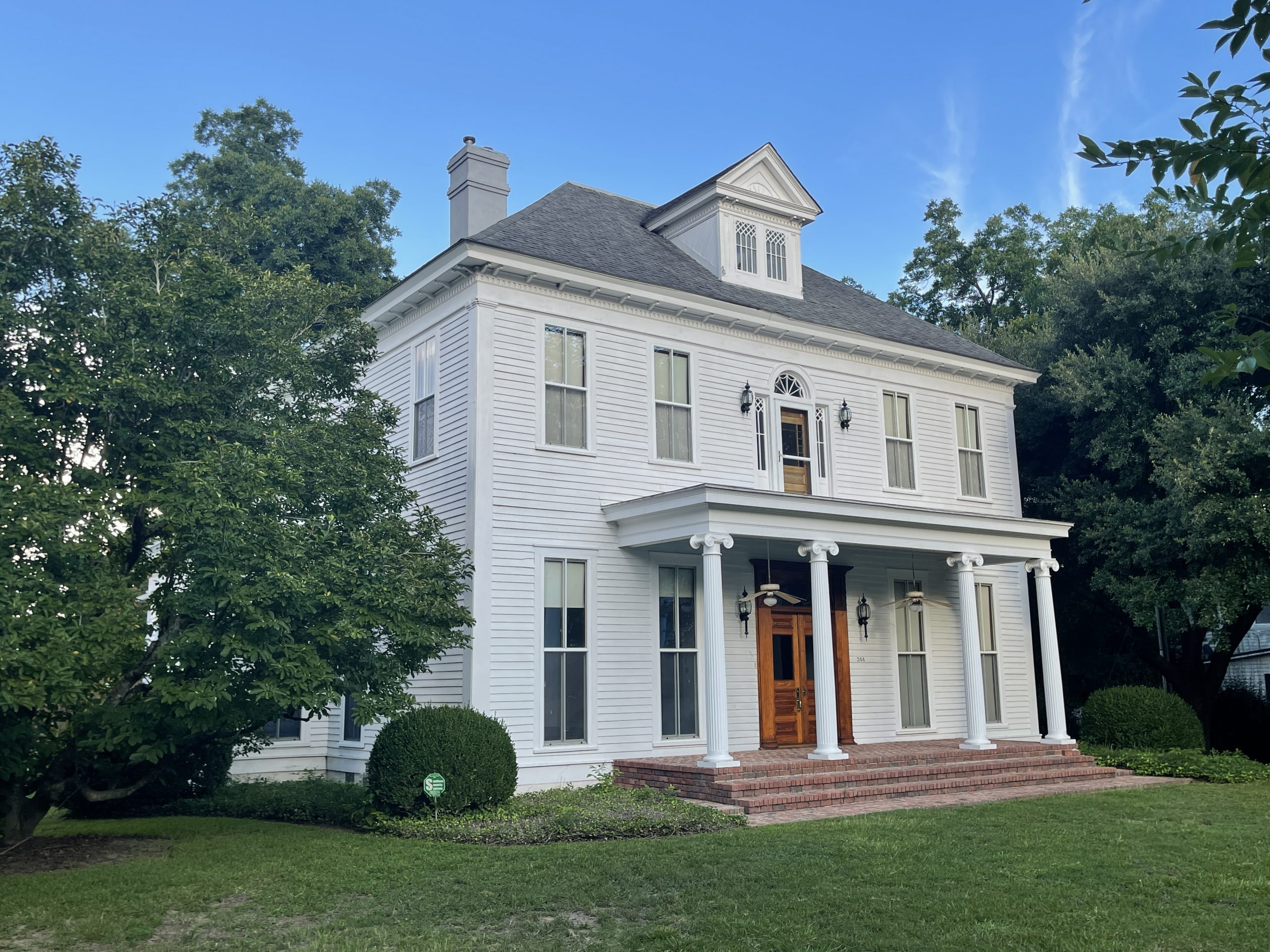
“Sunnyside”
Designed by the renowned architect Charles E. Choate, this stately house was built in 1896 by the first owner, Mr. T. Wright Garbutt. In 1902, a wealthy businessman and banker, Lake B. Holt, purchased the property. Under the name of Holt Banking Company, Mr. Holt eventually acquired ownership of 12 small banks across rural Georgia that failed during the Great Recession. The property was later home to prominent citizen and Sandersville mayor, Joe Slade and his family. Since 1987, the charming and stately home has been owned by Mr. Jim Horadam and Mrs. Nann Horadam.

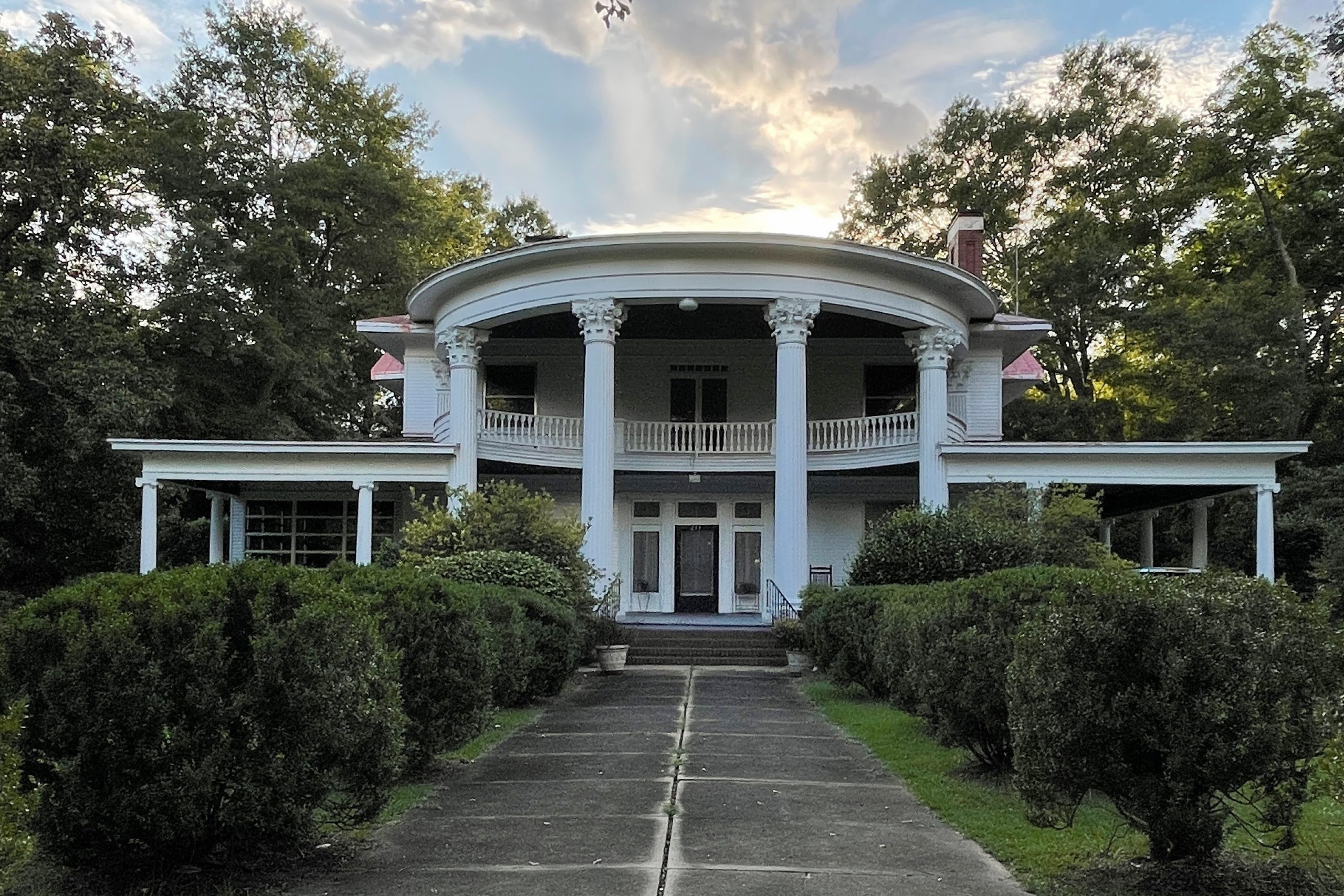
Designed in the majestic Beaux-Arts style, this beautiful home was built in 1916 by prominent merchant Mr. Lewis H. Holt and his wife, Mrs. Bessie J. Holt. Prior to its construction, the Holts lived in a smaller wood clapboard house in the same location for many years. It was moved to the rear of the lot and turned to face Warthen Street once construction on the newer elegant home commenced. During their time on North Harris Street, the Holts raised five children. The Sullivans later acquired the property, and it remained in their family until the death of Miss Louise Sullivan. Mr. Tommy and Mrs. Jackie Holton purchased the property from the Sullivan estate in 1981. The Holtons raised two children in the home.

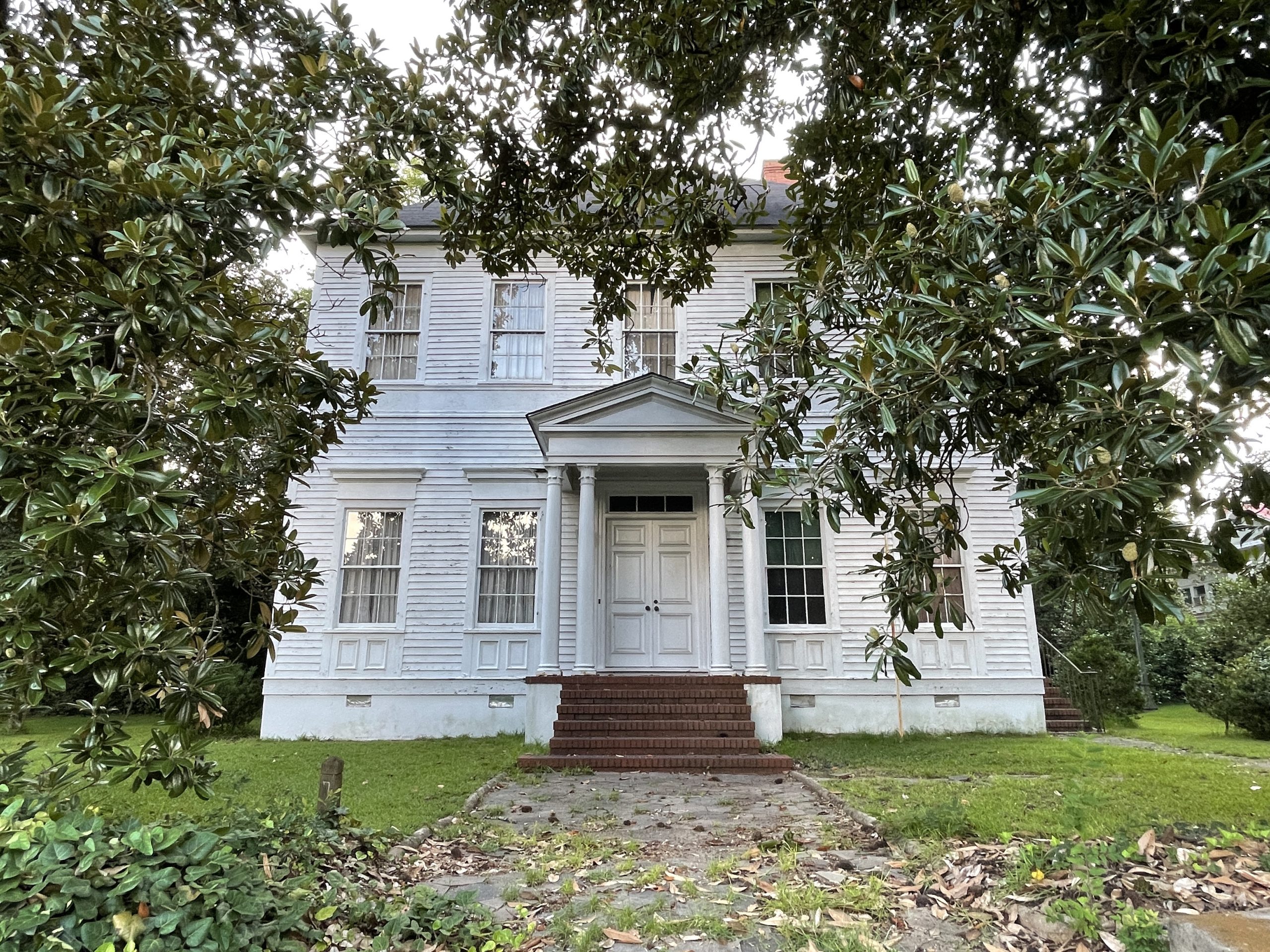
“Cedar Hall/Magnolia Hall”
Built around 1878 by Bryant and Elizabeth Watkins, this home was originally a four-room clapboard cottage called “Cedar Hall” to acknowledge a row of cedar trees in the yard. In 1897, the Irwins bought the house for $1,708 at a public auction held to settle the debts of the Watkins estate. Soon after the purchase, Mr. and Mrs. Irwin remodeled the home in the fashionable Victorian Style of the day. In 1955, their daughter Louise once again remodeled the home. This time to reflect the Georgian Style present today. Miss Irwin renamed the home Magnolia Hall in honor of her father’s favorite trees he added to the property. After the death of Miss Irwin, Mr. Tommy Jordan and Mrs. Barbara Jordan acquired the property in 1979. The Jordans raised two children in the home.

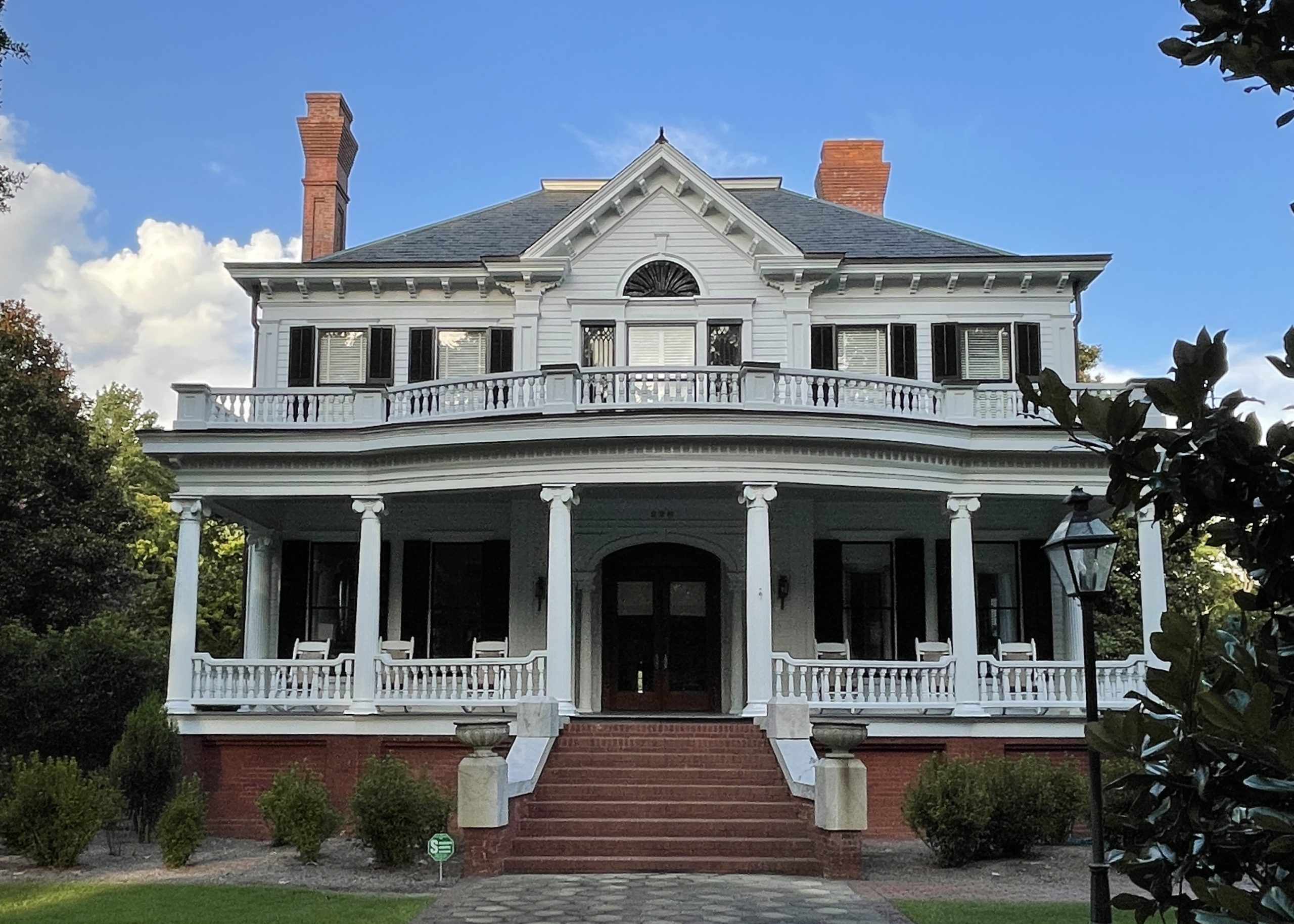
Mr. Edward (Eddie) Cohen and his wife, Mrs. Davie B. Cohen, built this magnificent home around 1904. The Cohens occupied the property for only a few years and relocated to Atlanta to raise their three daughters. The subsequent owners were Mr. Thomas Hardwick, his wife Mrs. Maude E. Hardwick, and their daughter Mary. Mr. Hardwick would later become a noted statesman as a US Representative and Governor of Georgia. The stately home would eventually belong to the Tarbutton family. The senior Mr. Benjamin J. Tarbutton, who bought the house, was a prominent citizen, businessman, and the Sandersville Railroad Company owner. He lived there with his sister Miss Sadie Tarbutton. Several years later, Mr. Tarbutton married Miss Rosa McMaster of Waynesboro. Together, they raised their two sons, Mr. Ben J. Tarbutton, Jr., and Mr. Hugh M. Tarbutton, in the house. Today, grandson Mr. Ben J. Tarbutton, III, his wife Mrs. Betsy Brumby Tarbutton, and their three children proudly call this home.

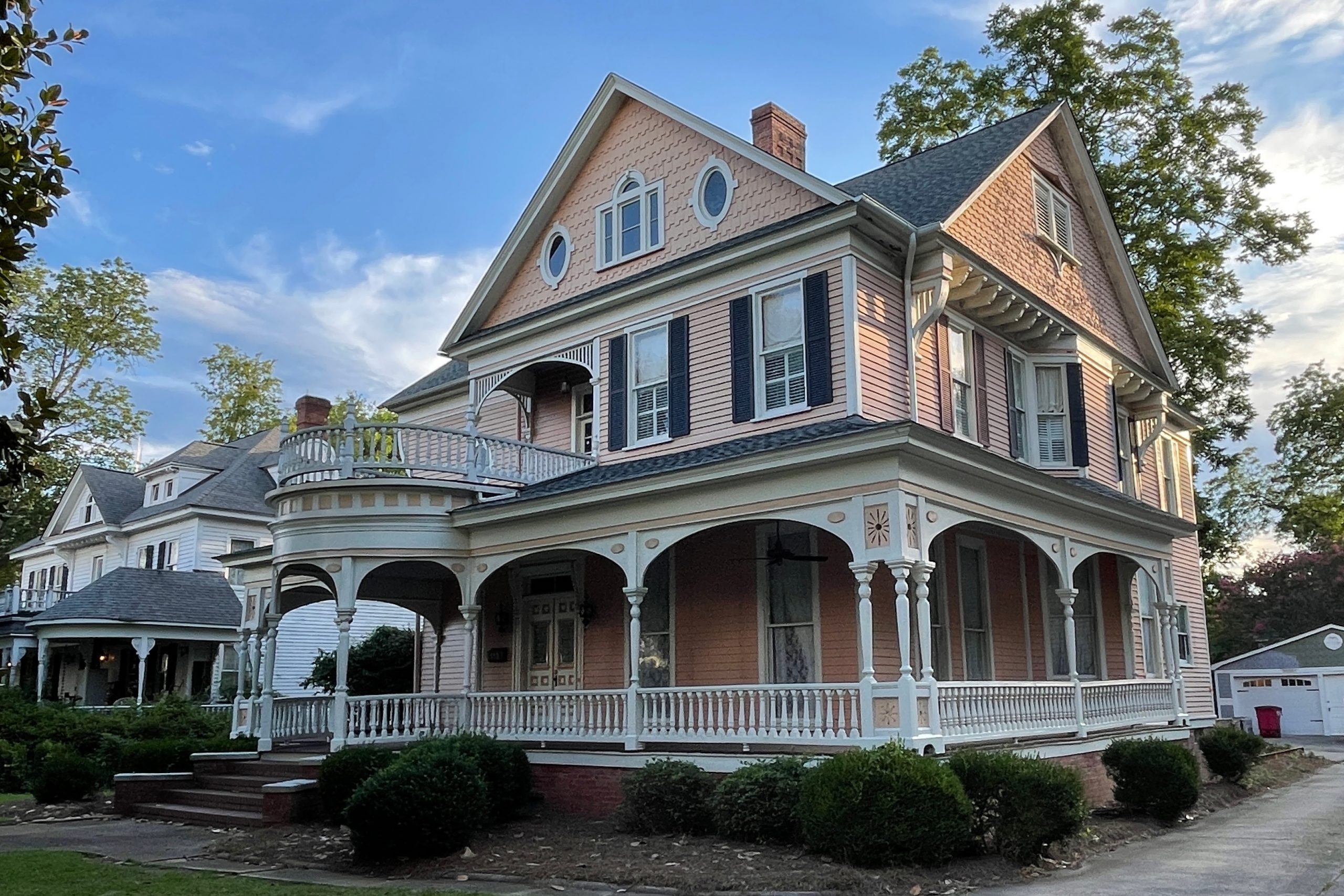
This structure is one of the more recognized design works of noted architect Charles E. Choate in Sandersville and Washington County. In 1900, Mr. Henry Paris built this beautiful Victorian home for his bride, Pauline Hermann Paris. Their daughter and eldest of three children, Rachel Paris, iconized the house by her book dubbed "Silk Stocking Street." After the passing of Rachel's parents, the house was sold to Mr. Green and Mrs. Immogene Elkins. Mr. Felix "Billy" Veal, grandson of the Elkins, and his wife Frances acquired the home in the mid-1980s. The Veals maintained as much of the original integrity of the structure as possible. The house, originally gray and later white, was given a face-lift when the Veals chose a coral pallet as a uniquely historic color for the house's exterior leading to its affectionate nickname, the "pink" house. Not long after the passing of Mr. Billy Veal, the house was sold in 2020.

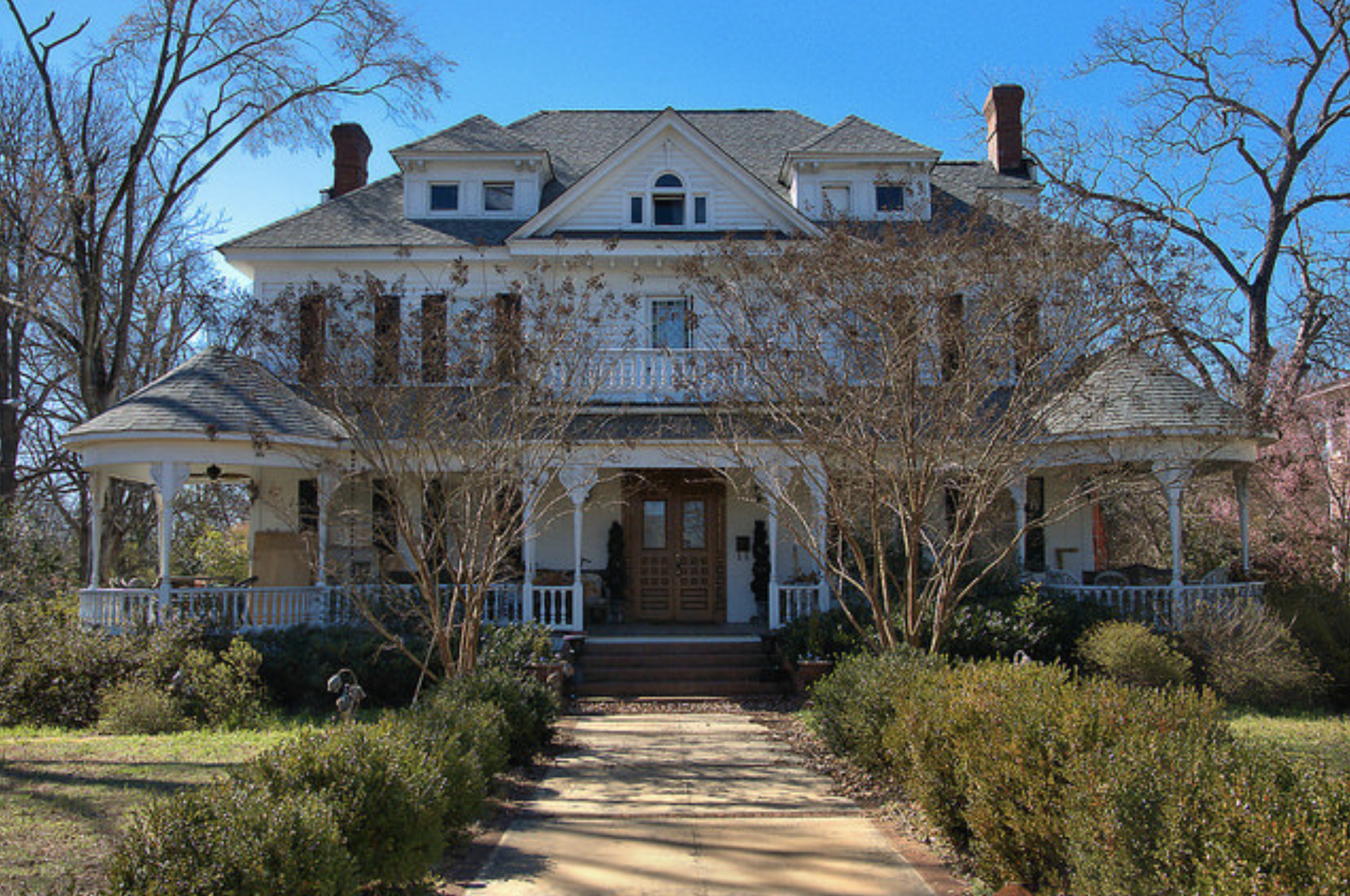
Around 1850, Dr. S.D. Brantley, one of the earliest physicians in Sandersville and his wife Mary initially built their home as a simple two-story plantation-style clapboard house. After their passing in 1897, Mr. Warren Lovett and his wife, Sallie, bought the house and remodeled the exterior. The Lovetts preferred the more fashionable Victorian style that was en vogue and added a large front porch with rounded seating bays and other ornate characteristics typical of a fine Victorian home. The Lovett's only daughter, Miss Sallie Lovett, met Mr. Eugene West while boarding a training from Savannah with her parents. The couple soon married and moved into the residence with the Lovetts on North Harris Street. Mr. and Mrs. Wyatt Haygood later acquired the property before its purchase by current owners, Jim and Dianne Davies.

Click Below To Choose Your New Historical Tour District




